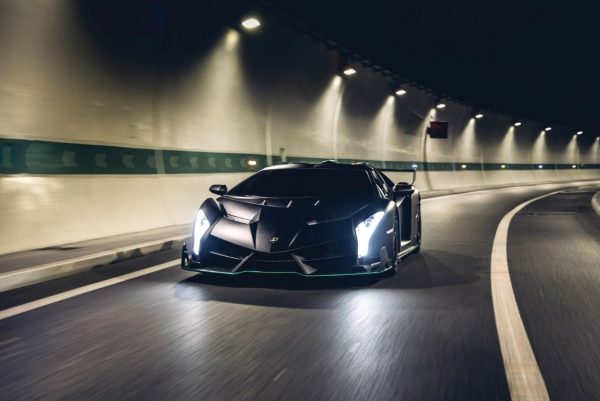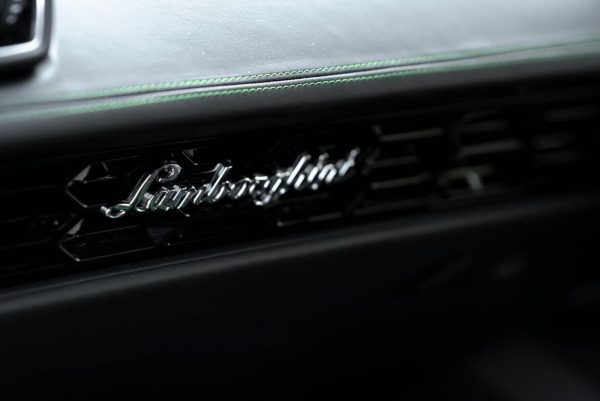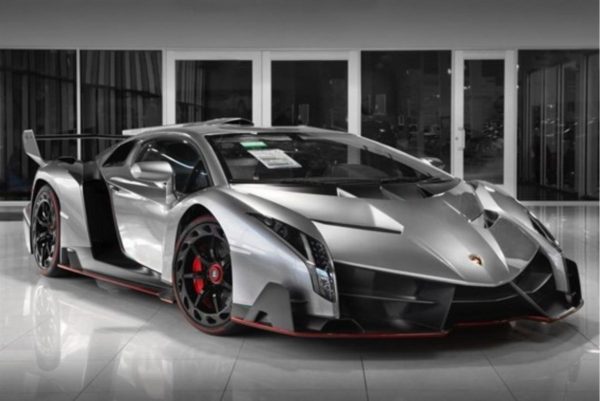The Lamborghini Veneno Roadster is a collector’s item that epitomizes engineering and design excellence.
In addition to its exceptional elegance and speed, the Lamborghini Veneno Roadster is an open-wheel racing prototype. As a result, it is considered one of the most bizarre vehicles in the world. Just nine units will be built in 2014, with each unit selling for 3.3 million Euros (excl. tax).
Lamborghini Veneno Roadster. Open means completely open.
The Lamborghini Veneno Roadster is original and enjoyable to drive – because open in the Veneno Roadster means completely open. In the lack of a roof, a strong rollover bar is all that is necessary for ultimate safety. The design was developed to mimic the behaviour of a racing prototype in order to provide the best aerodynamics and stability on fast turns. Regardless, driving on the road is totally legal.

The Veneno Roadster speeds from zero to 100 kilometres per hour in 2.9 seconds and has a peak speed of 355 kilometres per hour, with a maximum output of 552 kW/750 horsepower.
The Lamborghini Veneno Roadster is powered by a 6.5-litre 12-cylinder engine, with an ISR transmission with five modes and permanent all-wheel drive. It’s the fastest production car in the world, built on a racing chassis with pushrod suspension and horizontal spring/damper components.
Lamborghini Veneno Roadster. Design
The Lamborghini Veneno Roadster delivers the aerodynamic efficiency of a racing prototype to the streets of the United States and other countries. Every detail of its design is intended to achieve a specific goal: extraordinary dynamics, maximum downforce with little drag, and effective cooling of the high-performance engine.
As a result, the Veneno Roadster is unmistakably a Lamborghini. It adheres to the same design concept that has distinguished all of Sant’Agata Bolognese’s outstanding sports vehicles throughout the years. In addition to the enormous proportions, the sharply arrow-shaped front end and the interaction between razor-sharp lines and pristine surfaces are highlighted.
 The Lamborghini Veneno Roadster’s whole construction has been meticulously designed to maximise airflow and downforce output. Because it is a giant aerodynamic wing, the front end serves as the vehicle’s primary propulsion system.
The Lamborghini Veneno Roadster’s whole construction has been meticulously designed to maximise airflow and downforce output. Because it is a giant aerodynamic wing, the front end serves as the vehicle’s primary propulsion system.
The obvious separation of the rear fenders from the vehicle body pays respect to the racing world while also increasing aerodynamic flow. The sleek underbody gives way to a massive diffuser at the back of the car, which frames the four large exhaust pipes separated by a splitter. Large engine compartment apertures help to ventilate the region and guide airflow to the rear wing.
Significant aerodynamic simulation and motorsport experience were used to build the adjustable rear wing. These provide the best possible airflow in the interaction of the adjustable rear wing with the rear diffuser.
The aerodynamic purpose of the unusual alloy wheels is also reflected in their appearance. A carbon-fiber ring around the wheel rim functions as a turbine, sending additional cooling air to the carbon-ceramic brake discs.
Each customer will be able to personalise his or her own vehicle to suit his or her preferences, including the usage of the eye-catching paint colour “Rosso Veneno,” which was created just for the Veneno Roadster.
Safety First
Furthermore, the Veneno Roadster, like the Gallardo, demonstrates Lamborghini’s unrivalled skill in CFRP-based lightweight construction. The Roadster’s monocoque is built of carbon-fiber reinforced polymer and serves as its structural basis. All of the outside portions are composed of carbon-fiber reinforced plastic (CFRP).
The Veneno Roadster complies with all applicable safety and registration standards across the world, and it comes standard with a complete complement of safety equipment, including airbags and the ESP handling system, which was specifically designed for this vehicle.

The Veneno Roadster’s interior is likewise heavily adorned with carbon fibre. The carbon fibre monocoque can be seen both inside and outside the car, particularly around the central tunnel and the sills. Lamborghini’s Forged Composite material is used to make the two lightweight bucket seats.
CarbonSkin, a woven carbon-fiber material, covers the whole cockpit as well as a portion of the seats and the headliner. This incredibly fine-looking carbon-fiber matting, which has the appearance of a high-tech cloth, conforms wonderfully to any design and helps to reduce vehicle weight.
The Veneno Roadster’s methodical, carbon-fiber, lightweight design is noticeable not just on the outside, but also on the scales: the Veneno Roadster weighs little over 1,000 pounds, with a few pounds dry weight.
Weight
Despite weighing only 1490 kilogrammes (3,278 pounds), the Veneno Roadster has a weight-to-power ratio of 1.99 kg/hp (4.38 lbs/hp), resulting in nothing short of mind-blowing performance. It’s difficult to put into words the incredible acceleration measure of 2.9 seconds.
Despite having an aerodynamic configuration meant to generate huge downforce, the Veneno Roadster has unusually low wind resistance, allowing it to attain a peak speed of 355 km/h (221 mph).
More to read: Top 10 Hypercars You Haven’t Heard About
